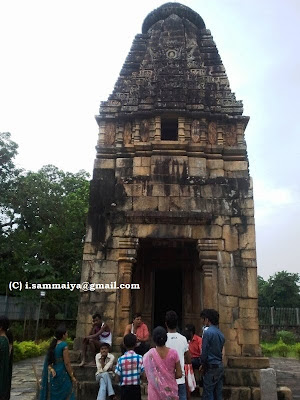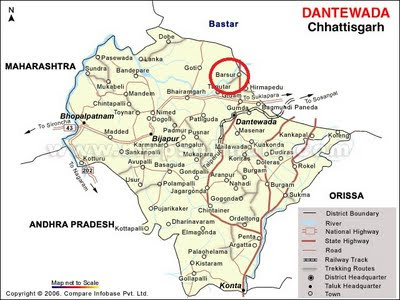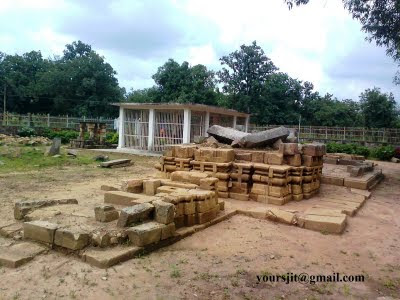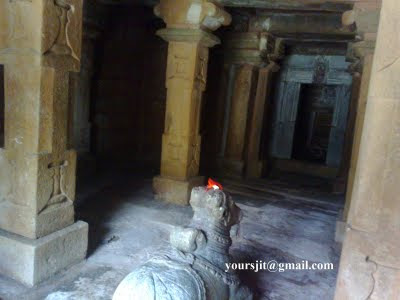Barsur:
by Jitendra Nakka
Hi Guys!! How r u? Another story from Bastar, perhaps you guys must be thinking about my interest and focus on it. Yes, I admit it ‘coz it I belong to this area, and know it better than others, but its all about Chhattisgarh, not about just a division, nevertheless, let’s start. Well, as you know Bastar being the most untouched area of Chhattisgarh, still manages to bring out some of the mysterious facts about this state, rather it may be about culture, customs and traditions of the state, rather may be about the ancient cities, their art and sculpture, rather may be about natural tourists places etc. This time I have tried to enlighten and focus some of the facts about an ancient city of Bastar called BARSUR.
Geographical Location:
Situated on the bank of holy Indravati river, this village lies to the north of transport junction Geedam and District head-quarter Dantewada. Its location is 19.1349514N, 81.3862038E.
When and How to reach?
Situated on the bank of river Indravati, Barsur is 21 km away from the transport junction Geedam and nealy 33km away from the district head quarter, Dantewara. It is also connected from Divisional Head Quarter Jagdalpur, nearly 98 km from it. By all means, it is connected from major towns by Bus route only. It is reachable on all seasons of the year.
As we have many hotels in Jagdalpur who are providing tour packages, you can enjoy a wonderful trip to Barsur. There are some tourist hotels, guest houses and rest houses made by forest department of both the district headquarters of Bastar and Dantewara. On the way from Geedam to Dantewara, tourism board of Chhattisgarh has made a beautiful guest house, allotted for tourists.
Historical Importance:
As told by the name ‘Barsur’ itself, it denotes a bright history of the area right from the mythology of Banasur to Rise and fall of Nagawanshi rulers to reign of kaktiya rulers, with the presence of hundreds of ancient idols and statues and monuments, to support every fact of its golden history.
Religious Importance:
Here we can still see many temples, like the Huge Ganesha twin temple, the Mama-Bhanja temple, the Battisa temple, the Chandratiya temple, the Goddess Mavli temple, etc. All these temple are most important centres of worship for the whole state, and a big convention( religious fair called jatra) is organized here annually.
Mythological Importance:
This place was anciently called as BALSURYAGARH or CHAKRAKOTE. There is a myth here, that once these area was ruled by Demon Ruler Banasur. Later this area came in to the hands of the Nagwanshi rulers, who made it their capital and developed it as one of the most important center of art and culture. There are still many ancient proofs like remains of 100 ponds and 100 temples, which can tell that this area once enjoyed a golden age.
Later on this area came under the control of the kaktiya rulers, who chose Dantewara as their capital, thereby lost its importance and with the lack of proper maintenance, the temple and other monuments got ruined, wrecked and devastated.
Archeological Importance:
This village is of great archeological importance because still there are many ancients temples and statues/idols which can tell about the history clearly. Even on the bank, archeologists have found some of the ancient antique coins which tell that Nagawanshi rulers ruled this area near around 14th century A.D.
Temples:
As told earlier, this place once had around 100 temples, which are still able to tell about historical art and sculture of the area, in the form of remnants of those temples. Much of the temples have got wrecked and devasted but the few which are recently renovated and maintained by the local body are the Huge Ganesha twin temple, the Mama-Bhanja temple, the Battisa temple, the Chandratiya temple, the Goddess Mavli temple, etc
Ganesha twin Temple:
As represented by the name, this temple is devoted to Lord Ganesha. Here we can see the artistic twin statues of Lord Ganesha, where the left is smaller than the right one. Both the statues are very big, the smaller one being the size of 5 feet and the later one is of around 6 feet. Nearby the temple, we can still see devastated example of the respective temple whose remnants are still present there.
Fig: Ganesha twins(renovated) Photograph by: Jitendra Nakka
Fig: Ganesha twins(devastated ancient temple) Photograph by: Jitendra Nakka
Battisa Temple:
As meant by the name, this temple have 32 pillars (stambh) , having 4 rows and eight columns, which is spectacular to see because of its symmetry all around in every pillar. Here in one temple there are two garbh-griha for lord Shiva with the presence of two individual big Shiv-lings, one on each garbh-griha. This temple shows a artistic example of temple construction over a stage formation.
Fig: Battisa Temple(inner view) Photograph by: Jitendra Nakka
Mama-Bhanja Temple:
Actually this temple is devoted to Lord Ganesha, But its popularly called as Mama-Bhanja Temple because according to ancient mythology, the sculptist Mama and bhanja are punished to complete its construction in 1 day, otherwise the consequence was, one should kill other, But they successfully managed to build it, hence named after them.
Fig: Mama Bhanja Temple (left view) Photograph by: Jitendra Nakka
 Fig: Mama Bhanja Temple (front view) Photograph by: Ambala Sammaiya
Fig: Mama Bhanja Temple (front view) Photograph by: Ambala Sammaiya
 Fig: Mama Bhanja Temple (front view) Photograph by: Ambala Sammaiya
Fig: Mama Bhanja Temple (front view) Photograph by: Ambala Sammaiya
Fig: Stone carved Manuscript found infront (front view) Photograph by: Ambala Sammaiya
Chandraditya Temple:
This temple is devoted to Lord Shiva. Situated near a beautiful pond, this temple shows an artistic example of carvings of idols and statues all around the outer walls of the temple, where the ridges of the outer walls are decorated by the carvings of Hindu Gods and Goddesses, and that of the grooves are decorated by erotic carvings. The inner view shows the Nandi-Maharaj(Bull) facing towards the Garbh-Griha of the temple. The Garbh-Griha of the temple is beautifully carved by Nagwanshi art and sculpture with the centrally placed Shiv-Ling.
Fig: Chandraditya Temple (back lateral view) Photograph by: Jitendra Nakka
Fig: Alternate Ridges and Grooves showing carvings of Hindu Gods/Goddesses and erotic paintings (photograph by: Jitendra Nakka)
Goddess Mavli Temple:
As represented by the name, this temple is devoted to one of the sister of Goddess Danteshwari called Goddess Mavli, who is considered to be a form of Mahisasurmardini Goddess Durga. Earlier it was just an idol placed over an exposed area, but the local body and youth committee took an initiative and temple around it. Now it is properly under care.
Other tourist places:
Barsur is also called as the South Gate of Abujhmad. Going to the north towards the way of the Jwahar Navodya Vidyalaya, we can also see the awaited Bodhghat Reservoir Scheme.
Similarly going to the north of the Bodhghat reservoir, their lies a bridge called Saath Dhar pool, from where two km afterwards we can enjoy a very beautiful waterfall of Indravati river called Saath Dhar waterfalls. As the name denotes, the Indravati river suffers braiding and divides itself into seven different streams of water called as Saath-Dhar.
Conclusion :
In the last, I must say , if you wanna visit a worthseeing tourist place, if you wanna admire some of the most spectacular ancient temple, their art and sculpture, if you wanna see really a natural place ever, do visit BARSUR.
Want to know more about Chhattisgarh,read my post on Bastar Shiva Temple and famous Danteshwari Temple of Chhattisgarh...
Do like and +1 post along with your valuable comments this will keep me motivated....
Do like and +1 post along with your valuable comments this will keep me motivated....




























